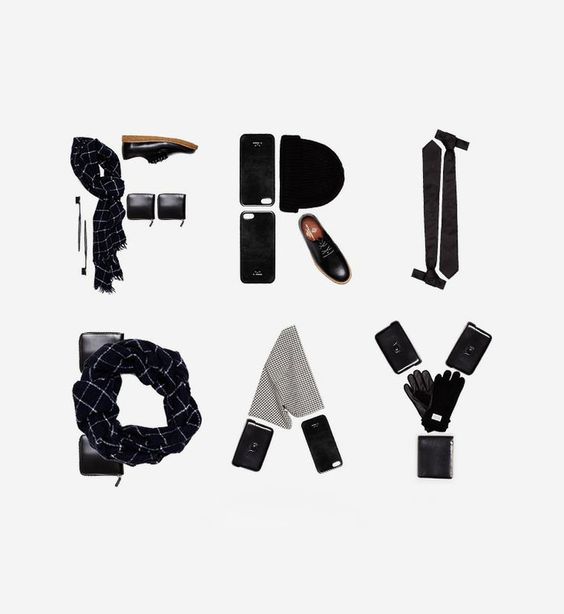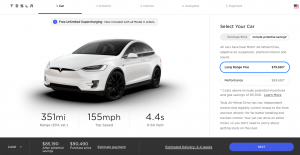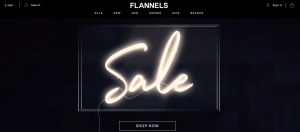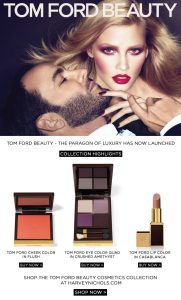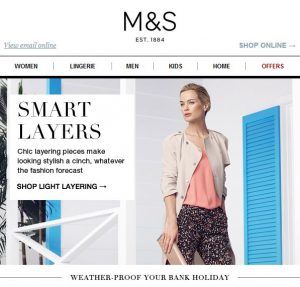BFCM. The time of year all brands, customers, and agencies have firmly imprinted in their minds as the cooler months roll in..
The time of year when some brands can accumulate in a SINGLE DAY what they may accumulate in several months leading up to it.
As a consumer, you will be hit from all angles, often by brands you had never even heard of, all vying for your attention, and your hard earned cash.
It’s the time your inbox receives an onslaught of “Our Cyber Monday sale!” emails, sales announcements, and your Instagram turns into a boxing match between your favourite brands.
It’s an epic time of year, absolutely. One of which we absolutely buzz off and get a thrill like no other when we see 6X, 7X, 8X+ ROAS at top of funnel. And then of course, we get all hands on deck to scale the living sh*t out of it as each hour goes by, with us chomping away to try and hit record sales months for our brand partners.
However, there is a flip side.
A big flip side which can be disastrous, and put your brand in a tricky place if not methodically thought out.
Riding on the hype train of Black Friday, Cyber Monday is a potentially disastrous decision if you follow every competitor’s lead without sensitivity to what your audience expects and wants to hear from you, and one of which if not carefully curated ahead of time, can leave you scrambling away with a lacklustre campaign that fails to hit the hype.
It’s a mega traffic time of year, which can lead to endless unsubscribes, unfollows, and potentially even bad feedback scores and ‘spam’ hits on your ads.
…We aren’t about that life.
Last year, we gave 3 top tips to maximise your sales.
This year, these tactics provided will do exactly that once again, and possibly even to larger effect than what was seen in 2019.
This year, we will provide 3 tips to ensure you don’t get it horribly wrong when it comes to your BFCM strategy..
1. If It Feels Wrong, Don’t Do It.
If you’re planning out your BFCM outreach right now and it feels slightly uneasy as a brand, or you straight up feel like you’re only doing it because it’s BFCM, we would recommend putting on the brakes.
If you have those negative feelings about your outreach, it’s likely that your audience will feel that way too on the receiving end.
There’s nothing cooler than a brand that thoughtfully decides not to follow the herd on a very herd-inducing stretch of days like BFCM.
This is not to say don’t do anything however, because if you do nothing you will undoubtedly miss the moment on what could have been an epic sales busting week for your brand. But rather, what I am trying to get across here is that you can dare to do differently. It doesn’t have to be a blanket site-wide sale (although for the majority, these work a treat) There is no ‘need’ to do high discounts if your brand isn’t totally aligned to that and it feels wrong, would hit the margins way too much, or maybe you just don’t need to do them; this is pretty much only if you are Christian Dior. Most brands reading this however, should be doing something.
Some food for thought here is to think around how creativity can induce larger volumes of sales, such as bundling, or tiered discounts based on amount spent.
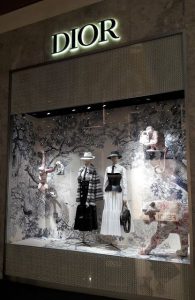
If it doesn’t feel right to you to hop on the BFCM train in the way you think it should be played, get creative and think through what your audience does want to receive from you on a day when they’re traditionally asked to give. This brings me to my next point..
2. If You’re Going To Do It, Do It Right.
By this, we mean don’t be stingy.
A measly 10% off or a ‘free shipping for BFCM’ promo is not a promo for BFCM.
This is like turning up to a Halloween party with a scream mask and a bin bag, you may as well not have even turned up.
The discount needs to pack a punch, be ‘wow’ worthy, and something in which will entice a buying rush like when Yeezy drop a new pair.
The trick here, is to do something that will get your audience processing orders faster than they ever normally do, in a FOMO inducing state.
It’s easy to know if you’re winning when it comes to this, because within 15 minutes of you putting the offer live, your jaw will be dropping to the floor with the amount of ‘dings’ you get from Shopify.
If you haven’t experienced this, the chances are your BFCM of last year failed to hit the hype levels required to pack the right punch, and you don’t want to miss the opportunity once again in a year in which e-commerce will hit all time transaction highs.
When thinking through your business’ BFCM plan, I challenge you to backtrack and ask yourself if your audience would debate the offer being strong enough, or something they could easily pass on and move on to a competitor.
As a business, your primary responsibility is to produce income, and so knowing your customer and your demographic is fundamental here to knowing how to play BFCM, and how to get the adrenaline flowing from your customers when they see that glossy ad served up to them on their Insta feed.
Be the business that listens to its audience year round, and you will know what would be the best bet.
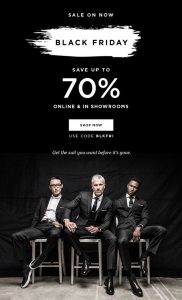
3. Don’t overcommit. (Don’t be that brand)
Only produce what you can keep up with.
A lot of email and social media ghosting happens on BFCM; brands that have barely sent any emails, do 1-3 IG stories a day throughout the year all of a sudden bombard you with emails on BFCM and have an IG story that looks like Tetris. As soon as BFCM is over, like a ghost, they disappear from your inbox as quickly as they came and you get little to no value throughout the other months of the year.
Using your email marketing purely as a tool to make announcements is old school, and completely useless for today’s consumer, and one of which will dwindle your subscriber list faster than you brought them in.
There is enough clutter in people’s inboxes – if your emails have no utility to audiences other than as bait for them to spend money, they will sense this, and you’ll lose them. Especially so with this point, you need to ensure that if you are to send a ton of promotional content, you are ready to keep this up to a similar level once the hype settles and the period is over.
As soon as the middle of December rolls around, you need to ensure you keep it up in a way that is true to your brand.
One saying we have at The Normal Company is that LTV is the master metric. Do not jeopardise your long term stature for the short term shiny dollar, ensure you can carry everything out in a moderation that suits you, suits the brand history of marketing, and the future in which you plan to continue the distribution.
If you want to captivate and engage with your audience in a meaningful way, start off by sending useful content in your emails and boosting its intrigue for your audience.
Does your audience want to receive brand updates, funny memes, helpful information about sustainable fashion, a cause in which you back as a brand, or useful advice that suits why people buy your product?
Show up to your customer in a way in which best reflects your brand, the tone of voice in which you wish to be perceived with, and a manner in which you would be proud of seeing when looking at it’s content, context and value to the audience.
Selling your products or services, especially on BFCM requires a nurturing process more often than not. Don’t think that just because you’re giving out a once-in-a-year discount that your audience will let you skip over the fundamentals of what makes them want to buy from you.
Create a vibe, an aesthetic unique to you, a feeling which your customer is a part of, and you will forever have an audience which is actively on the lookout for your discounts, and ready for you to drop that email bomb on them as they not so patiently press refresh every 10 seconds on November 27th.
What I have described here, is that high LTV brand which dominates it’s market.
When you have an audience like this, you have what we call a superbrand.
Before BFCM comes around this year, start sending the emails and doing the work now to build an engaging conversation between you and your audience. Well, tbh you should have been doing this way before now, but creating a hyped and engaged audience is the firepower you need which will front-end-load your campaigns before you’re even thinking about them. It’s the surefire way to boost the success of any BFCM play you put out there, in a way in which your competitors could only dream of keeping up with.

